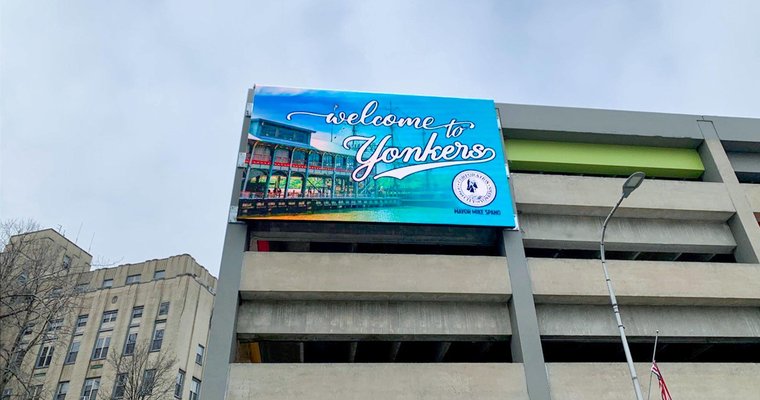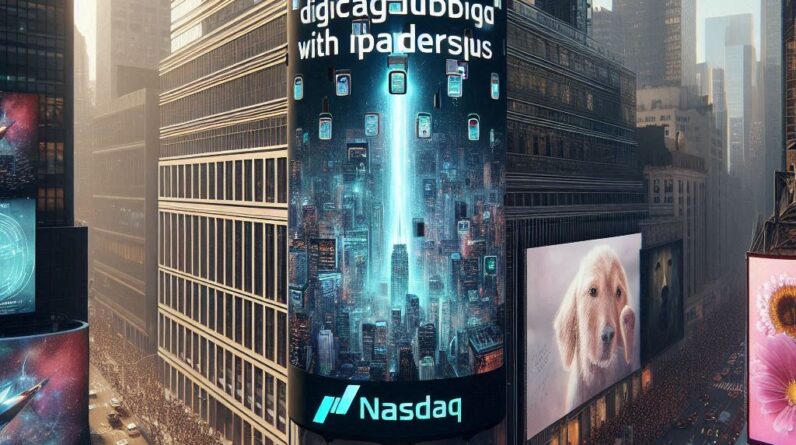
[ad_1]
Advantech and Google representatives Ryan Nieto and Peter Freudenberger joined Digital Signage Today editor Daniel Brown for a webinar discussing “The perfect duo: GoogleOS & Advantech’s digital signage players revolutionizing the industry.”
 Image provided by Adobe Stock.
Image provided by Adobe Stock.
Hardware or software? Player machines or SoC/Cloud? Digital signage and professional AV operators know these long-standing debates well, but what if the answer was some combination of “both/and?”
Google and Advantech representatives joined Digital Signage Today editor Daniel Brown for a webinar to discuss “The perfect duo: GoogleOS & Advantech’s digital signage players revolutionizing the industry,” including topics related to hardware, software and a large variety of audience questions.
Ryan Nieto, digital signage product manager at Advantech, joined to discuss Advantech’s digital signage hardware solutions, including the DS-410 signage player, and how Google’s OS software has changed the game for customers from various categories.
Peter Freudenberger, global customer and partner sales engineer lead for ChromeOS Flex, joined to share the story of Google’s growing digital signage footprint.
‘Digital signage needs to do more’
Celebrating its 40th anniversary in 2023, Advantech currently holds 38% market share in IPC category. “We’re not just here in North America,” Nieto said. “We’re all over the world.”
This supports a digital signage product line thanks to the OEM capabilities of the firm and its wide ecosystem, informed by the company mission statement: “Enabling an intelligent planet,” via smart city solutions including digital signage, Nieto added.
With major global installations including examples at Picadilly Circus in London, England, Los Angeles, California and Times Square in New York City, among others, Advantech has targeted market applications including outdoor signage (smart bus stops, kiosks, wayfinding, and advertising) along with hospitality and QSR use cases such as sign-in and ordering kiosks.
Being able to support smart functions including AI-powered programmatic content — such as digital out-of-home advertising, localized and personalized ads, or AI-powered analytics — are all essential in the new digital signage market, where “digital signage needs to do more,” Nieto said.
“Gone are the days when traditional digital signage is just, ‘Oh, we have a 1080 screen, and we have our nice, pretty menu, or we have 4K.’ All of our customers say — and the trend now in all three of these categories is — digital signage needs to do more. It needs to have more functionality. It needs to provide some level of smart applications, AI.”
Advantech’s strategy is to integrate purpose-built digital signage players for robust reliability with the flexibility and robustness of Google’s ChromeOS Flex; this collaborative approach aims to serve the growing needs across verticals, such as a case study Nieto discussed with a major Canadian retailer using Advantech’s DS-085 ordering kiosks, used by thousands of customers daily and with many units being in the field for at least five years.
Nieto said the power of the Advantech strategy comes from product longevity and localized support, along with the wide application capacity of players like the DS-085 and DS-410; Nieto added that the players enjoy a <1% failure rate across the product line; of course, another core ingredient is being ChromeOS Certified; Freudenberger helped elaborate on the ChromeOS side.
Google’s growth in digital signage
So, what exactly is Google doing in the digital signage space, and what makes ChromeOS Flex so flexible in digital signage uses?
ChromeOS Flex is a lightweight, cloud-based operating system designed to operate across virtually any hardware used in this industry, Freudenberger said. The broad application of Google across sectors and verticals helps give it insights into what is happening across the digital signage and kiosk world, he added.
“In the coming years, north of 80% of all retail sales will still be completed in physical locations,” Freudenberger said, citing the National Retail Foundation. This applies beyond retail, he explained, to nearly any category and industry that uses kiosks and digital signage. The assumption that in-office or brick and mortar retail experiences were dead is not true, and data from the past 18 months shows a different reality in offices, QSRs, retail and more in the post-lockdown world.
“The expectation for rich digital experiences has become greater than it ever has before,” he added. “People want to go to a mall or to a store, even to their office, and be informed, entertained. And what is fundamentally driving that all is technology. The demand for contextual, rich, smart and always-available experiences.”
The breadth of digital experiences demanded by consumers today means using a robust, lightweight, highly-secure operating system like Google OSFlex is more important than ever, Freudenberger explained, citing the rise of “shopper-tainment” in retail, with self-checkout and self-service screens and kiosks.
Traditional operating systems have problems like slow performance, requiring high-touch management, security problems like ransomware and viruses, expensive hardware, difficult update processes, difficult remote maintenance and more, Freudenberger explained, which is where the lightweight aspect of offerings like ChromeOS provide a welcome simplification in setup and maintenance for organizations in various verticals.
ChromeOS was engineered for simple, cloud-based device management, he said, along with affordability, built-in and proactive security and remote access.
Building a new signage ecosystem
Aiming for a durable, future-proof approach to the rapidly evolving needs of digital signage, Nieto and Freudenberger offered insights into the thought process behind the hardware and software ecosystem they are helping to develop for global customer groups across sectors and verticals.
To view the webinar on-demand, click here.
Daniel Brown is the editor of Digital Signage Today, a contributing editor for Automation & Self-Service, and an accomplished writer and multimedia content producer with extensive experience covering technology and business. His work has appeared in a range of business and technology publications, including interviews with eminent business leaders, inventors and technologists. He has written extensively on AI and the integration of technology and business strategy with empathy and the human touch. Brown is the author of two novels and a podcaster. His previous experience includes IT work at an Ivy League research institution, education and business consulting, and retail sales and management.
[ad_2]
Source link






